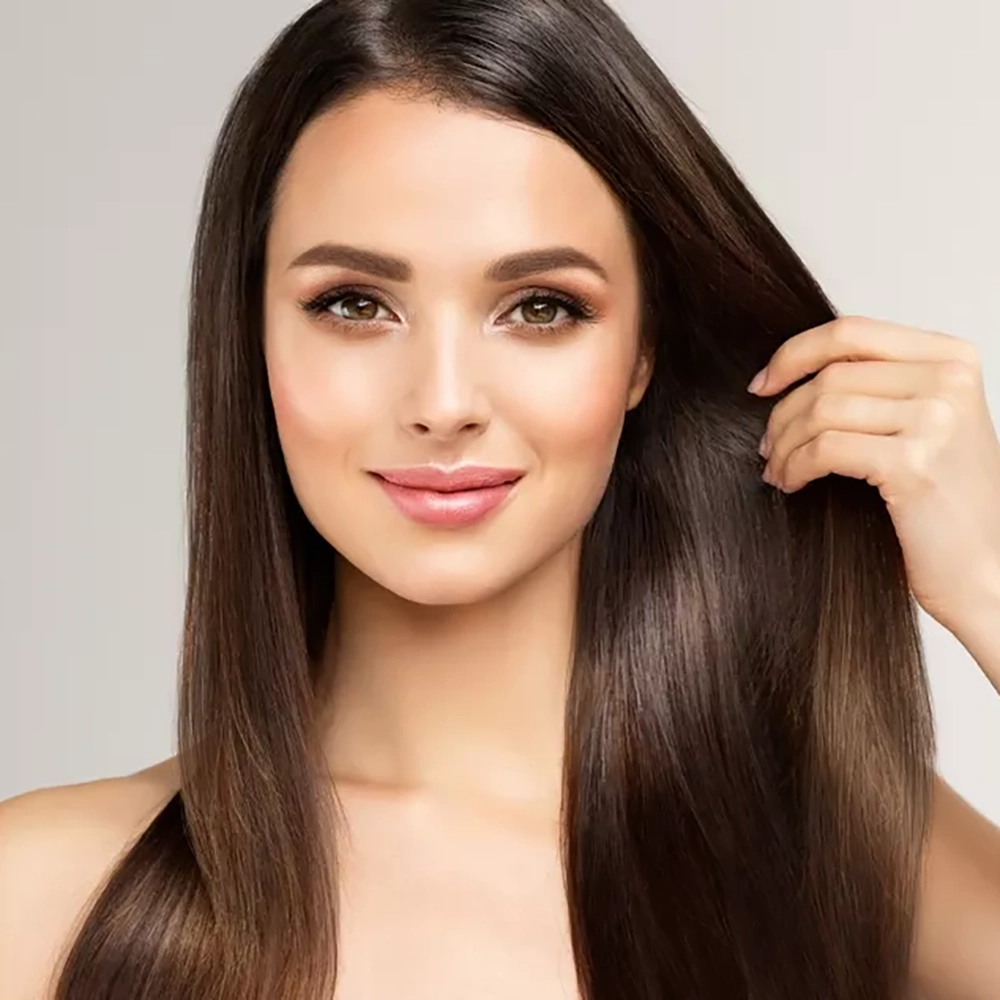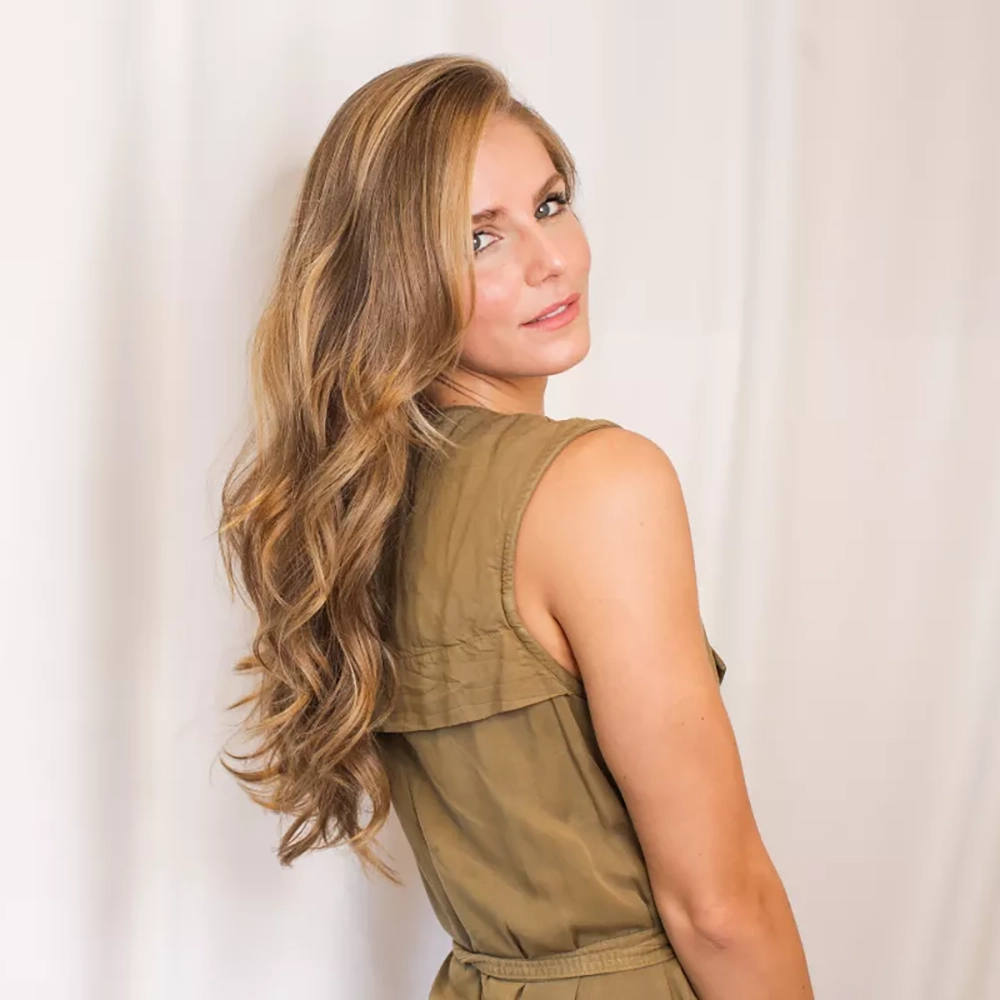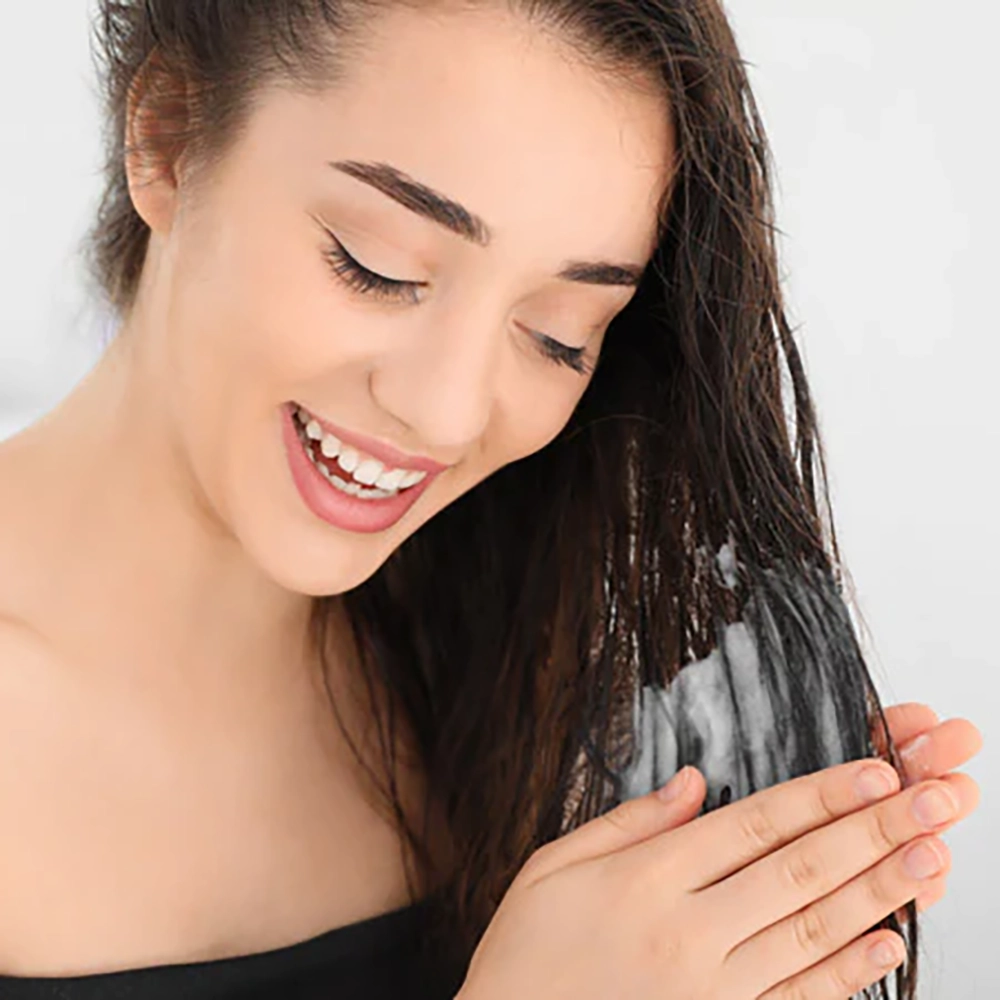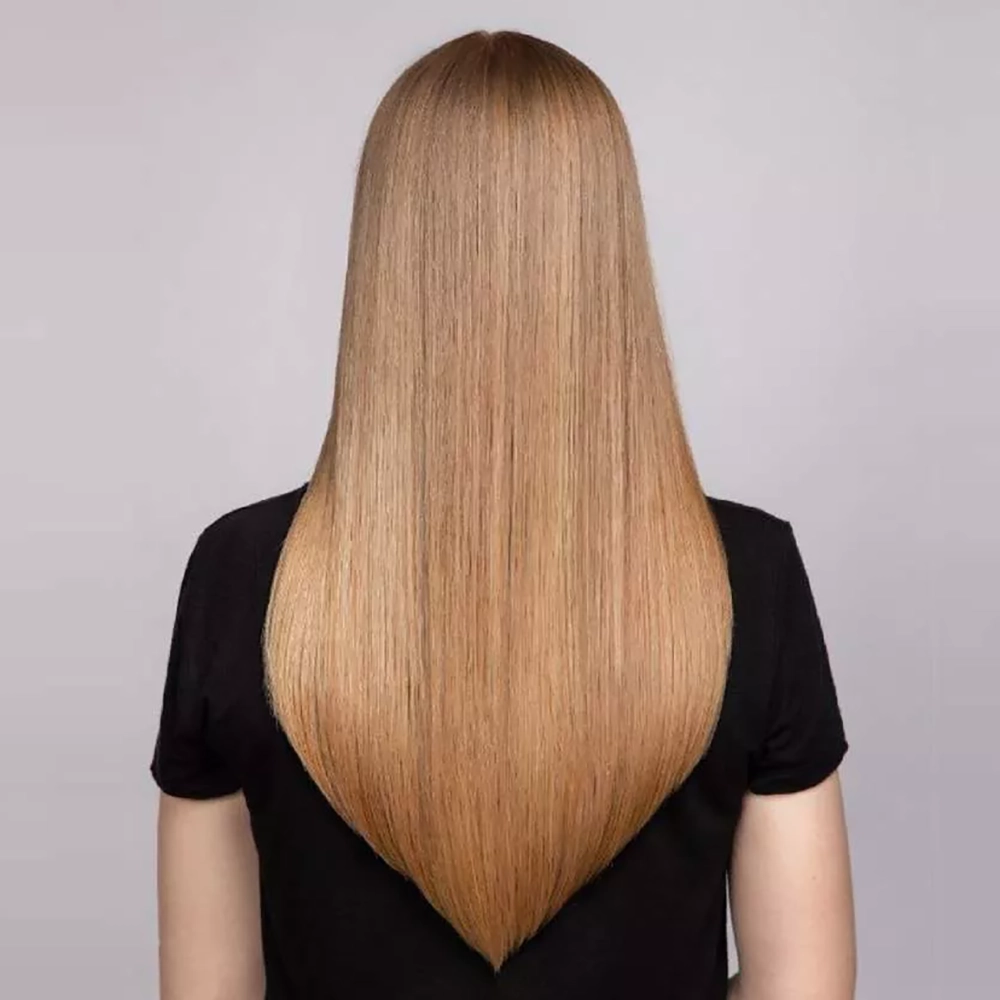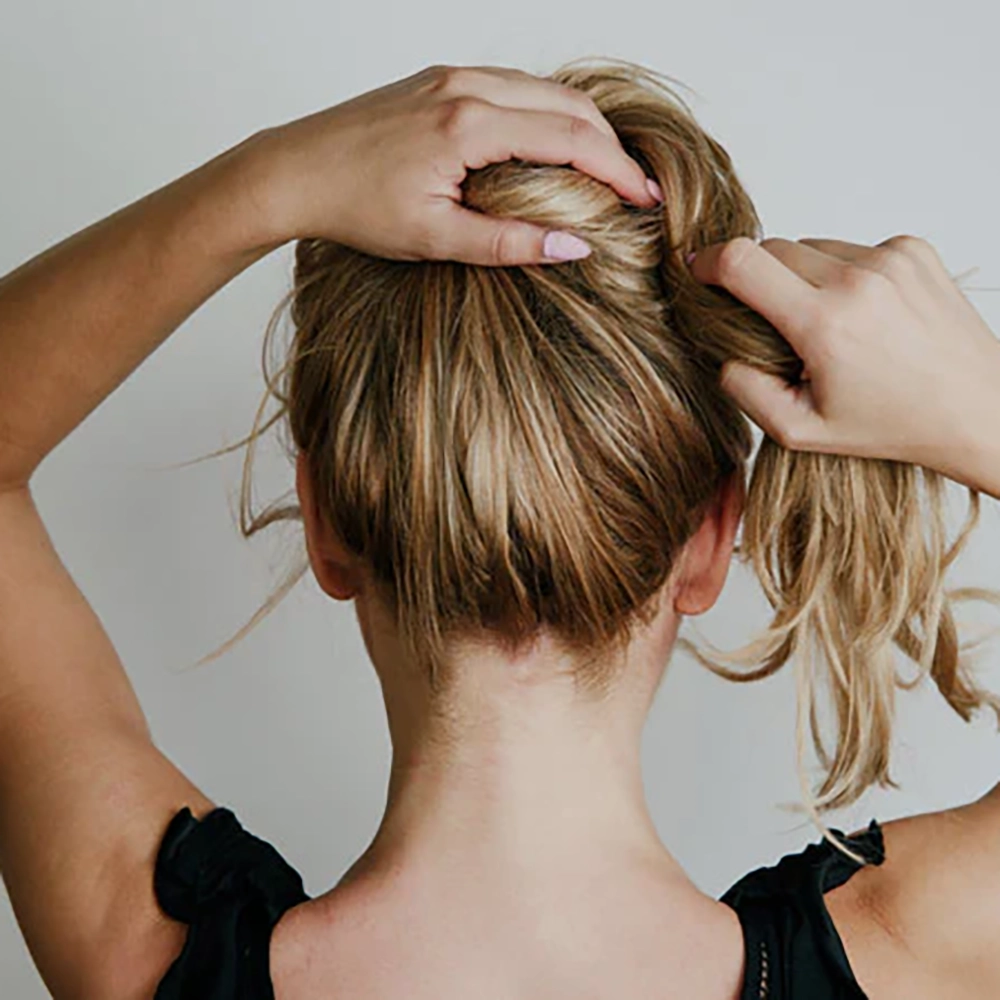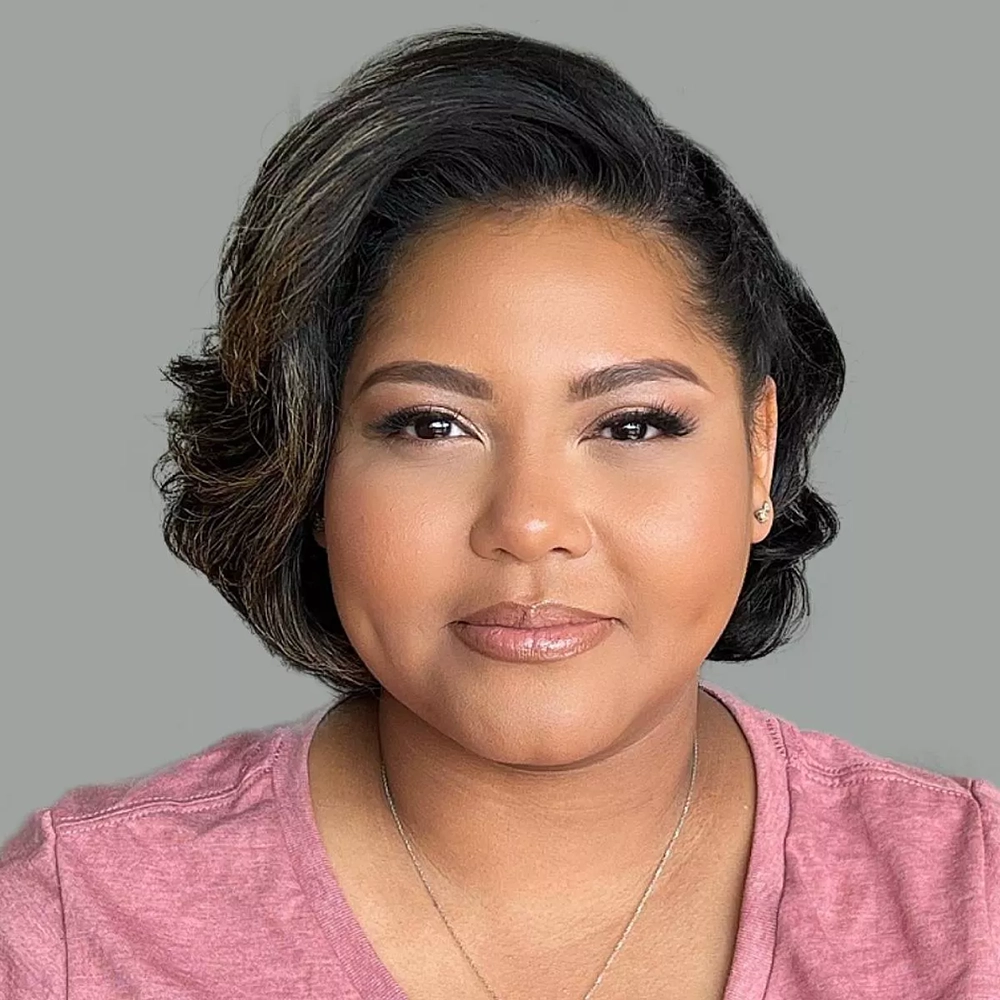Identifying Hair Type and Issues
When it comes to taking care of your hair, understanding your hair type and the common issues associated with it is crucial. Knowing your hair type can help you choose the right products and tailor your haircare routine to address specific concerns. Whether you have dry and frizzy hair or oily and limp locks, identifying your hair type will enable you to make informed decisions about the best ways to care for your precious tresses.
1. Determining Your Hair Type:
Before diving into the world of haircare, it’s essential to determine your hair type. The four main hair types are straight, wavy, curly, and coily. Straight hair tends to be smooth and lacks significant curl or volume. Wavy hair falls between straight and curly, with loose S-shaped waves. Curly hair forms spiral or ringlet-shaped curls, while coily hair is tightly curled or kinky. To identify your hair type accurately, observe the natural state of your hair as it dries and pay attention to its texture and pattern.
2. Common Hair Issues:
Each hair type comes with its own set of issues that you may encounter. For example, dryness and frizz are common concerns for those with curly or coily hair, while oily roots and lack of volume may plague individuals with straight hair. Wavy hair types often struggle with maintaining their waves and preventing them from becoming limp. By identifying the specific issues associated with your hair type, you can target them with appropriate solutions and treatments.
3. Solutions for Different Hair Types:
To address the various hair types and their respective issues, there are numerous solutions available. Choosing haircare products specifically formulated for your hair type can make a significant difference. For instance, individuals with dry or frizzy hair may benefit from hydrating and anti-frizz products, while those with oily hair may opt for volumizing and balancing shampoos. Additionally, regularly deep-conditioning your hair, minimizing heat styling, and protecting it from environmental factors can go a long way in maintaining healthy and beautiful hair.
| Hair Type | Common Issues | Suggested Solutions |
|---|---|---|
| Straight | Lack of volume, oiliness | Volumizing shampoos, dry shampoos, minimal heat styling |
| Wavy | Limp waves, frizz | Texturizing sprays, anti-frizz serums, diffusing instead of air-drying |
| Curly | Dryness, frizz, lack of definition | Hydrating shampoos and conditioners, deep-conditioning treatments, curl-enhancing gels |
| Coily | Dryness, shrinkage, difficulties in detangling | Moisturizing shampoos and leave-in conditioners, detangling sprays, protective hairstyles |
By understanding the unique characteristics of your hair type and the associated issues, you can create a haircare routine tailored to your specific needs. Remember to be patient when trying out new products and techniques, as finding the perfect regimen may require some experimentation. Embrace your hair’s natural beauty and make it a priority to provide it with the care it deserves.
Creating a Consistent Haircare Routine
A consistent haircare routine is essential to maintaining healthy and beautiful hair. It involves a combination of regular washing, conditioning, and nourishing treatments. By establishing a consistent routine, you can effectively address common hair issues and promote overall hair health. Let’s take a closer look at the steps you can take to create a successful haircare routine.
Step 1: Identify Your Hair Type and Issues
The first step in creating a consistent haircare routine is to identify your hair type and any specific issues you may be experiencing. This knowledge will help you choose the right products and treatments that cater to your hair’s unique needs. Is your hair oily, dry, or a combination? Do you struggle with frizz, dandruff, or hair loss? Understanding these aspects will guide you towards the most effective solutions.
Step 2: Choose the Right Shampoo and Conditioner
Once you know your hair type and issues, it’s crucial to select the appropriate shampoo and conditioner. Look for products specifically designed for your hair type, whether it’s for dry, oily, or normal hair. Pay attention to the ingredients list, avoiding harsh chemicals that can strip your hair of its natural oils. Consider using sulfate-free and paraben-free options for a gentler cleanse.
Step 3: Practice Proper Hair Washing Techniques
Proper hair washing techniques play a significant role in maintaining healthy hair. Wet your hair thoroughly before applying shampoo and conditioner. Massage the scalp gently with your fingertips to stimulate blood flow and remove buildup. Rinse thoroughly to avoid residue. Avoid rough towel drying and instead opt for patting or air drying to prevent damage.
Step 4: Nourish Your Hair with Natural Ingredients
Natural ingredients can provide your hair with the nourishment it needs. Consider incorporating hair masks, oils, and serums into your routine to promote hydration, shine, and strength. Look for ingredients like argan oil, coconut oil, aloe vera, and shea butter, which are known for their beneficial properties. Apply these treatments to damp or dry hair, depending on the product instructions.
Step 5: Protect Hair from Heat and Styling Damage
Excessive heat styling can cause damage to your hair over time. To protect your locks, use heat protectant sprays or serums before using hot tools. Set them at a lower temperature and avoid excessive heat exposure. Additionally, limit the use of styling tools and harsh hair accessories that may cause breakage or friction.
Step 6: Prevent Hair Loss and Promote Growth
Hair loss is a common concern for many people. To prevent hair loss and promote growth, focus on maintaining a healthy lifestyle, including a balanced diet and regular exercise. Nourish your body from within to support strong and vibrant hair. In addition, consider using targeted hair growth products that contain ingredients like biotin, keratin, and vitamins.
A consistent haircare routine takes time and effort, but the results are worth it. By following these steps and making adjustments based on your hair’s needs, you can achieve and maintain healthy, luscious locks. Remember, consistency is key in haircare, so stick to your routine and embrace the positive changes it brings to your hair.
Choosing the Right Shampoo and Conditioner
When it comes to haircare, one of the most important decisions you can make is selecting the right shampoo and conditioner for your hair type. With countless options on the market, it can be overwhelming to find the perfect match for your specific needs. However, by understanding your hair’s unique characteristics and considering any issues you may be experiencing, you can make an educated choice that will lead to healthier, more vibrant locks.
One of the first things to consider when choosing a shampoo and conditioner is your hair type. Is your hair fine and oily, or thick and prone to dryness? Determining your hair type will help you narrow down your options and find products that are specifically formulated to address your hair’s needs. For those with oily hair, a clarifying shampoo that removes excess oil and residue can be beneficial. On the other hand, if you have dry or damaged locks, a moisturizing conditioner can help restore hydration and repair split ends.
In addition to your hair type, it’s also essential to think about any specific issues you may be facing. Do you have color-treated hair that requires extra care? Are you struggling with dandruff or an itchy scalp? By identifying these concerns, you can look for shampoos and conditioners that target these specific problems. For example, color-safe formulas are designed to prevent fading and keep your hair vibrant for longer. Anti-dandruff shampoos typically contain ingredients like zinc pyrithione or ketoconazole to combat flaking and soothe the scalp.
| Shampoo | Conditioner |
|---|---|
| Volumizing Shampoo: Provides lift and body to limp hair. | Volumizing Conditioner: Adds fullness and helps maintain volume. |
| Moisturizing Shampoo: Hydrates and nourishes dry, damaged hair. | Moisturizing Conditioner: Restores moisture and improves hair’s elasticity. |
| Color-Protect Shampoo: Preserves and enhances color-treated hair. | Color-Protect Conditioner: Locks in color and prevents fading. |
Remember, choosing the right shampoo and conditioner isn’t just about the product itself, but also how you use them. It’s crucial to follow the instructions on the bottle and use the appropriate amount of product. Using too much shampoo can strip your hair of its natural oils, while using too little conditioner may not provide enough hydration. Additionally, avoid over-washing your hair, as this can lead to dryness and damage. Finding the right balance and routine for your hair will help maintain its health and promote overall hair growth.
In conclusion, selecting the right shampoo and conditioner is a vital step in any haircare routine. By considering your hair type and any specific issues you may have, you can choose products that will address your unique needs. Remember to follow the instructions and use the appropriate amount of product for optimal results. With the right shampoo and conditioner, you can achieve healthy, shiny, and manageable hair that you’ll love.
Practicing Proper Hair Washing Techniques
When it comes to washing our hair, most of us follow the same routine – wet the hair, apply shampoo, rinse, condition, and rinse again. However, did you know that there are proper techniques that can enhance the effectiveness of your hair wash and improve the overall health of your locks? In this blog post, we will explore some important tips and tricks for practicing proper hair washing techniques.
The first step in a proper hair wash is wetting your hair thoroughly. Use warm water to wet your hair from root to tip. This helps to open up the hair cuticles and allows the shampoo to penetrate more effectively. Avoid using hot water as it can strip the hair of its natural oils and leave it dry and brittle.
Next, choose a shampoo that is suitable for your hair type and issues. Whether you have oily hair, dry scalp, dandruff, or color-treated hair, there is a shampoo formulated to address your specific needs. Look for shampoos that contain natural ingredients such as argan oil or aloe vera to nourish and hydrate your hair.
Once you’ve applied the shampoo, gently massage it into your scalp using your fingertips, not your nails. This stimulates blood circulation and helps to remove dirt, oil, and product buildup. Rinse your hair thoroughly, making sure there is no shampoo left behind.
Now, it’s time to condition your hair. Choose a conditioner that complements your shampoo and work it through the lengths of your hair, focusing on the ends. This helps to hydrate and detangle your hair, making it more manageable. Leave the conditioner on for a few minutes, allowing it to deeply penetrate the strands.
Finally, rinse your hair with cool water. The cold water helps to seal the hair cuticles, locking in moisture and adding shine. It also helps to reduce frizz and prevent damage from heat styling. Pat your hair dry with a soft towel and avoid rubbing vigorously, as this can cause breakage.
By following these proper hair washing techniques, you can ensure that your hair is thoroughly cleansed, nourished, and protected. Remember, each step is important in maintaining the health and beauty of your locks. So, next time you step into the shower, take a moment to practice these techniques and give your hair the care it deserves!
Nourishing Your Hair with Natural Ingredients
When it comes to nourishing your hair, there is a wide range of natural ingredients that can help improve its health and appearance. Using natural ingredients in your haircare routine can provide numerous benefits, such as promoting hair growth, preventing damage, and adding shine and moisture. In this blog post, we will explore some of the most effective natural ingredients for nourishing your hair.
1. Coconut Oil: Coconut oil is a popular choice for nourishing hair due to its high protein content and ability to penetrate the hair shaft. It helps to improve the strength and elasticity of your hair, preventing breakage and reducing split ends. Simply warm some coconut oil and apply it to your hair, focusing on the ends. Leave it on for at least 30 minutes, or overnight for a deep conditioning treatment.
2. Aloe Vera: Aloe vera is not only great for soothing sunburns, but it can also work wonders for your hair. It contains proteolytic enzymes that repair dead skin cells on the scalp and promote hair growth. Aloe vera also acts as a natural conditioner, leaving your hair smooth and shiny. Extract the gel from an aloe vera leaf and apply it directly to your scalp. Leave it on for 30 minutes before rinsing it off.
3. Avocado: Avocado is packed with healthy fats, vitamins, and minerals that are beneficial for hair health. Its natural oils moisturize and nourish the hair, making it soft, shiny, and more manageable. You can create a nourishing hair mask by mashing a ripe avocado and mixing it with a tablespoon of honey. Apply the mixture to your hair, focusing on the ends. Leave it on for 20-30 minutes before rinsing it off.
4. Rosemary: Rosemary is known for its stimulating properties that promote hair growth. It helps to increase blood circulation to the scalp, which nourishes the hair follicles and encourages healthier and stronger hair growth. You can make a rosemary-infused oil by steeping fresh rosemary leaves in warm olive oil for a few hours. Massage the oil into your scalp and leave it on overnight before washing it out in the morning.
Incorporating these natural ingredients into your haircare routine can provide numerous benefits and help nourish your hair from root to tip. Whether you choose to use coconut oil, aloe vera, avocado, or rosemary, these natural remedies can help you achieve stronger, healthier, and more beautiful hair.
Protecting Hair from Heat and Styling Damage
In today’s world, many of us rely heavily on heat-styling tools and use various hair styling products to achieve the perfect look. However, with increased usage of heat and styling products, our hair becomes more susceptible to damage. It is essential to take proper care of our hair to protect it from the harmful effects of heat and styling. In this blog post, we will explore some effective ways to protect our hair from heat and styling damage, ensuring that our locks stay healthy and beautiful.
1. Use Heat Protectant Products: Before using any heat-styling tools such as flat irons, curling irons, or blow dryers, it is crucial to apply a heat protectant spray or serum to the hair. These products create a protective barrier on the hair shaft, minimizing the damage caused by heat.
2. Limit Heat Exposure: While it may be tempting to use high heat settings for quick styling, excessive heat exposure can severely damage the hair. Try to minimize the usage of heat-styling tools and opt for air-drying or low-heat alternatives whenever possible.
3. Avoid Over-processing: Chemical treatments like perming, relaxing, or coloring can weaken the hair and make it more susceptible to heat damage. It is essential to give your hair enough time to recover between treatments and avoid layering too many chemical processes on the hair.
- 4. Choose the Right Styling Tools: Investing in high-quality styling tools with adjustable heat settings can make a significant difference. Opt for tools with ceramic or tourmaline plates as they distribute heat more evenly and reduce the risk of damage.
- 5. Practice Proper Styling Techniques: When using heat-styling tools, it is crucial to use them correctly. Avoid holding the tools in one place for too long and always keep them in motion to prevent hot spots and uneven heat distribution.
- 6. Deep Condition Regularly: To keep your hair strong and resistant to heat damage, incorporate deep conditioning treatments into your haircare routine. These treatments provide intense hydration and nourishment, making your hair more resilient.
By following these essential tips, you can protect your hair from heat and styling damage. Remember, prevention is always better than repair when it comes to the health of your hair. So, make the necessary adjustments to your haircare routine and ensure that your locks remain strong, healthy, and beautiful for years to come.
Preventing Hair Loss and Promoting Growth
Healthy and luscious hair is something that many people strive for. However, hair loss can be a common issue that many individuals face at some point in their lives. The good news is that there are certain steps you can take to prevent hair loss and promote hair growth. By following a few simple tips and incorporating them into your haircare routine, you can maintain strong and vibrant hair. In this blog post, we will explore effective strategies to prevent hair loss and promote hair growth.
First and foremost, it is important to identify the root cause of hair loss. Hair loss can be triggered by various factors such as genetics, hormonal imbalances, nutritional deficiencies, and even stress. Therefore, it is essential to consult with a dermatologist or a trichologist to determine the underlying cause of your hair loss. Identifying the root cause will allow you to tailor your haircare routine accordingly and address the issue at its source.
- Use gentle hair care products: Choosing the right shampoo and conditioner that are suitable for your hair type is crucial in preventing further hair loss. Look for products that are free from harsh chemicals, sulfates, and parabens. These ingredients can strip your hair of its natural oils and cause damage. Instead, opt for gentle formulas that promote hair health and growth. Additionally, consider using a wide-toothed comb or a brush with soft bristles to minimize hair breakage during styling.
- Eat a balanced diet: Proper nutrition plays a significant role in maintaining healthy hair. Ensure that your diet includes a variety of vitamins and minerals that are essential for hair growth, such as vitamin A, B vitamins, vitamin D, vitamin E, zinc, and iron. Incorporate foods like leafy greens, eggs, fatty fish, nuts, seeds, and whole grains into your meals to provide your hair with the necessary nutrients it needs to thrive.
- Avoid excessive heat and styling damage: Frequent use of heat styling tools like flat irons, curling irons, and blow dryers can cause damage to your hair and lead to breakage. Whenever possible, allow your hair to air dry naturally and minimize the use of heat styling tools. If you must use heat, apply a heat protectant spray to minimize the damage. Additionally, avoid hairstyles that pull tightly on the hair, as they can cause traction alopecia, a type of hair loss that occurs due to excessive tension on the hair shafts.
| Key Takeaways |
|---|
| Identify the root cause: Consult a professional to determine the cause of your hair loss. |
| Use gentle hair care products: Opt for shampoos and conditioners that are free from harsh chemicals. |
| Eat a balanced diet: Consume foods rich in vitamins and minerals that promote hair growth. |
| Avoid excessive heat and styling damage: Minimize the use of heat styling tools and avoid tight hairstyles. |
By implementing these preventative measures and making them a part of your daily haircare routine, you can significantly reduce hair loss and promote healthy hair growth. Remember, consistency and patience are key when it comes to seeing results. Give your hair the care it deserves, and watch it flourish into the beautiful and vibrant locks you desire.


